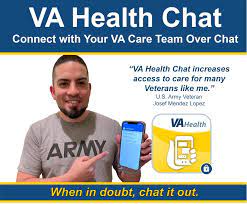DENVER — The VA launched its national telehealth services program in 2003. Twenty years later, it continues to look for new ways to break down barriers to care and expand services available to veterans from the comfort of their homes by tapping into services offered by industry leaders as well as developing internal capabilities.
Since early 2020, participation in telehealth visits has increased more than 30-fold, to nearly 3 million veterans in 2022. Video and store and forward telehealth encounters exceeded 11 million in 2021, with the majority of veterans under age 50 reporting a preference for video telehealth visits over in-person or phone options. The desire to connect with clinical care from home is not restricted to young veterans, though. At all ages, more than 40% of veterans expressed a preference for telehealth.
Having built out the formal telehealth services to link veterans to care from anywhere to anywhere, the VA looked for ways to increase engagement and ease access to care for quick questions that did not require an appointment. The VA engaged Iron Bow Technologies and its subcontractor, Denver-based CirrusMD Inc., which had developed a healthcare chat app that connects patients with physicians in less than 60 seconds via text messaging from a smart device or computer.
“This significant expansion of virtual care for veterans—the people who need and deserve the best care—is critically important to streamlining access to the VA’s system of care,” said CirrusMD President and CEO Jamie Hall. “We’re honored to support our veterans through VA Health Chat and proud to continue our mission of delivering immediate, affordable, high-quality care at scale.”
To meet the needs of veterans and work for the VA, the nation’s largest integrated healthcare provider, the company created a specially tailored version of the app.
“VA Health Chat is one of the tools the VA has made available to help veterans reach people who can help them access care,” said CirrusMD medical director John Dutton, MD, who receives much of his own care through the VA as a disabled U.S. Air Force veteran. “There are a lot of veterans who can’t travel, have difficulty with transportation or have chronic medical issues related to their time served in the military. They shouldn’t lack care because they can’t get to an in-person point of care. Virtual care allows them to get care where they are—so important for veterans.”
VA Health Chat started in VISN 1 in 2018 and today serves 5.1 million veterans in 15 VISNs. “We expect all veterans to have access to VA Health Chat by the end of this calendar year,” CirrusMD President and CEO Jamie Hall told U.S. Medicine. “We are currently working with the final three VISNs setting launch dates and training providers.”
5,000 Chats a Month
“We average about 5,000 chats per month with a continual growth rate of nearly 100% year over year,” Hall added. He expects that number to grow quickly once the program is rolled out to all veterans and a national marketing campaign launches to raise awareness and increase utilization as a way to further ease access to care.
“VA Health Chat is giving veterans a simple entry point to their healthcare services with direct access to clinical, pharmaceutical and scheduling services. They are able to resolve the majority of their concerns on VA Health Chat and also benefit from navigation services to schedule in person appointments and fill prescriptions easily,” Hall noted.
As useful as scheduling and prescription refill are, perhaps the greatest value is added by the VA Health Chat when veterans are uncertain how to proceed. For instance, veterans can connect to a nurse to help determine whether they should go to an emergency department or clinic or what to do if they suspect they are experiencing a drug reaction.
It can also help veterans figure out who they need to see or contact for care. “Each VISN typically has multiple channels so a veteran can chat with a clinical provider, a scheduler or a pharmacist,” Hall said. “Chats are nearly equal in each of these three areas. The VA employee can transfer between these channels for more holistic, streamlined care for veterans.” Some VISNs have added channels including beneficiary travel, specialty coordination and women’s health/whole health services.
That flexibility in routing calls and finding answers is critical to the service. “Once I initially got to my primary care doctor, [VA care] was fantastic,” Dutton said. “But getting there was challenging, and as a telemedicine doctor, I realized how important it is for any veteran to be able to speak quickly to a physician or physician extender and get care, or even get guidance about where to get care.”
In addition, when providers determine that video is needed during the chat, they can request a video call with the veteran within the application.
VA Health Chat is staffed at a minimum during regular business hours in all the VISNs it is available, with many offering 24/7 care. The VA’s goal is to offer the chat service round-the-clock in all VISNs. “In areas without 24/7 operating hours, any necessary escalation helps to support the veterans with in person or the 24/7 call service center,” Hall added.

